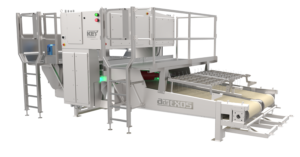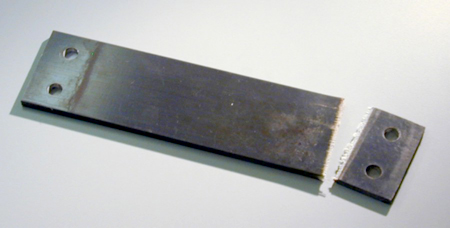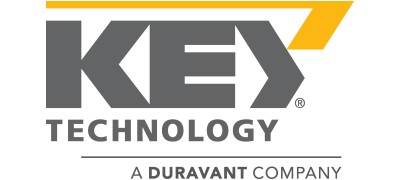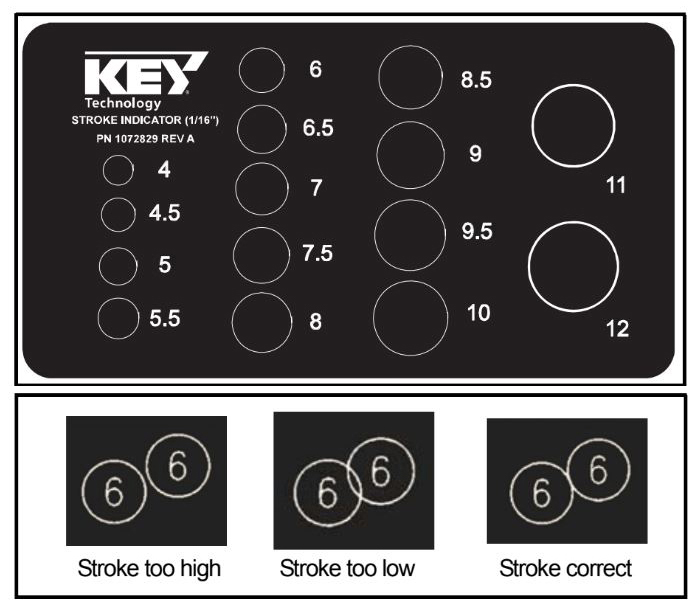
April 2021
This month we’re exploring how out-of-balance motors work and how to keep them in tune to ensure dependable performance. Also, for all of you potato processors out there, we are spotlighting ADR® maintenance and giving you the inside scoop on upcoming savings on consumable parts for your ADR.
Spotlight on ADR Maintenance
As the only vision system on the market designed specifically to cut out defects from potato strips, Key Technology’s Automatic Defect Removal (ADR) system recovers french fries with defects and turns them into good product, directly increasing yield.
To ensure your ADR is operating at its’ most efficient, Key Technology recommends a yearly audit. Performed by one of our highly skilled SupportPro Service Technicians, the yearly audit is an in-depth inspection of the ADR and covers every aspect of the machine.

Main areas of inspection include:
- Computer System
- Cooling Equipment
- Vision System
- Clean In Place (CIP)
- Air Ejection System
- In-Feed Shakers
Recommended Maintenance Intervals:
Your ADR Technical Manual provides recommended maintenance and inspections intervals that should occur in addition to an annual audit. Following the recommended maintenance schedule will prolong the life of your ADR and ensure it is operating at maximum efficiency. There are maintenance activities to be performed at each of the following intervals, be sure to check your Technical Manual for specific information and instructions.
- Each Shift
- Weekly
- Monthly
- 3/6/9 Month Inspections
- Annually
- Conditional Inspections
Sanitation and Cleaning:
Product and starch buildup can severely degrade your ADR’s performance. Remember to rinse your ADR after every shift and then thoroughly clean and sanitize your ADR every 7-14 days, or per the recommendation of your plant’s sanitation expert.
To ensure proper imaging for the vision system, pay close attention to the cleanliness of optical windows and lamp tubes. Always use clean, soft cloths when cleaning optical windows and lamp tubes.
Staying In-Tune and Out-of-Balance:
Maintenance Tips for Out-of-Balance Motors
Vibratory conveyors with out-of-balance motors have many advantages over shakers with traditional mechanical motors. By eliminating the need for a gearbox, drive belts and motor oil, out-of-balance motors minimize maintenance, maximize sanitation and reduce equipment noise.
Out-of-balance motors operate using two separate drives that rotate in opposite directions, counteracting each other from side to side to create a forwards and backwards force. This constant synchronization between the two drives is at the heart of the vibrating motion that powers our Iso-Flo® shakers.
Keeping a shaker ‘in tune’ – with perfect synchronization between the drives – is essential for reliable operation, whether the shaker is distributing, grading, aligning, scalping, feeding, or collecting . An out of tune shaker will disrupt the product flow and put excess stress on the shaker arms.
It’s important to confirm that the shaker’s stroke matches its designed specifications. At start-up, and periodically throughout production, check the shaker’s stroke indicator and listen for any unusual noises.
- The weight covers are dented – This causes the weights to rub on the cover and slow the drives, making them fall out of sync. If this is the case, the weight covers need to be repaired or replaced.
- The two drives are rotating in the same direction – This causes the shaker to become unstable. When replacing a drive, verify both drives are rotating in the correct directions.
- One of the drives is not spinning – This causes the shaker to become unstable but with less amplitude than if the drives are rotating in the same direction. Inspect the faulty drive to determine whether a repair or a replacement is needed.
- Product buildup on the shaker bed has added excess weight – This causes product flow issues and over stroking. To avoid this, ensure the shaker bed remains clear of product buildup.
 Since an out-of-tune shaker puts stress on the spring arms, pay close attention to their condition. White cracks near the arm’s mounting bolts are an indication that the shaker is out of tune. If one arm has weakened, the other arms will have taken on added stress and all the arms should be replaced at the same time.
Since an out-of-tune shaker puts stress on the spring arms, pay close attention to their condition. White cracks near the arm’s mounting bolts are an indication that the shaker is out of tune. If one arm has weakened, the other arms will have taken on added stress and all the arms should be replaced at the same time.
Always refer to your Technical Manual for specific inspection and maintenance instructions. And don’t forget, we’re always here to help! Contact us if you need maintenance assistance or spare parts.
Special Parts Savings in May
During the month of May, stock up and save on consumable parts for your ADR!
Don’t wait until you run out to restock these critical items including bearings, belts, knives and more. Mark your calendar to place an order in May and take advantage of these limited-time savings!
More Newsletters
-
April, 2022Five Reasons to Invest in Employee Training Read More →
-
March, 2022Let’s Talk Shakers : Tips to Tune & Maintain your Iso-Flo and Impulse Conveyors Read More →
-
February, 2022Safety 101, Care Tips, & Training Resources Read More →
-
January, 2022Cleaning and Sanitizing Safety Tips for Your VERYX Sorter and Iso-Flo Conveyor Read More →
-
December, 2021A Year in Review: the Service Advisor in 2021 Read More →






















